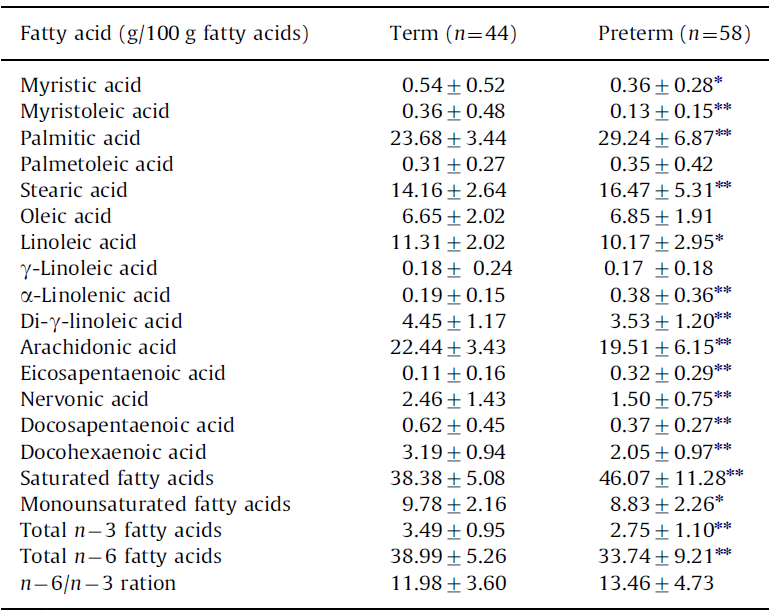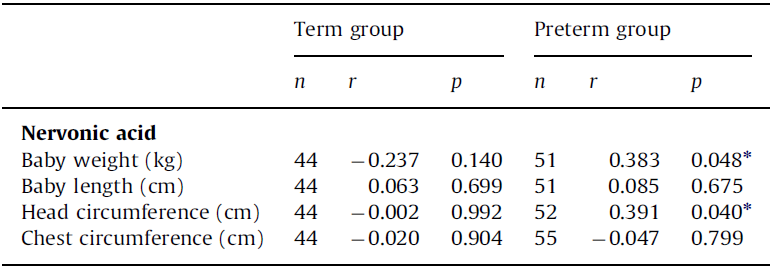

Comparison of the levels of polyunsaturated fatty acids in preterm and term delivery
Preterm birth refers to childbirth that occurs less than 37 weeks of gestation, and premature babies have 10% of deaths during the neonatal period. It is well known that the placenta provides the nutrients needed for the growth of the fetus, and can be used as an excretory organ to discharge waste from fetal metabolism. The long-chain polyunsaturated fatty acids (the membrane components and precursors of prostaglandins) is crucial to fetal central nervous system development .
Table 1 shows the fatty acid levels of placenta during preterm and term delivery. It can be seen from Table 1 that DHA and nervonic acid levels are lower in preterm delivery than in term delivery (p<0.01), while eicosapentaenoic acid (EPA) and α-linolenic acid (ALA) levels were higher (p<0.01), and the levels of arachidonic acid (ARA) and linoleic acid (LA) in the placenta were significantly lower (p<0.01).
Table1
Placental fatty acid levels in preterm and term deliveries.

Values given are mean±SD.
* p<0.05 when compared to term group.
** p<0.01 when compared to term group.
Nervonic acid is an important monounsaturated fatty acid in sphingomyelin and has been identified as an important component of myelin biosynthesis in nerve cells in the brain. The level of nervonic acid reflects the maturation of the brain and the ratio of fatty acids in red blood cells and cerebrospinal phospholipids is consistent. The accumulation of nervonic acid is a good indicator of myelination. Table 2 shows the relationship between nervonic acid and some body indexes at birth. As can be seen from Table 2, the nervonic acid content is positively correlated with the neonatal head circumference, and the lack of nervonic acid may cause fetal brain dysplasia.
Table 2
Association between nervonic acid and birth outcome .

* p<0.05 when compared to term.
Reference:Madhavi V. Dhobale, et al. 2011. Reduced levels of placental long chain polyunsaturated fatty acids in preterm deliveries . Prostaglandins, Leukotrienes and Essential Fatty Acids, 85: 149–153 .